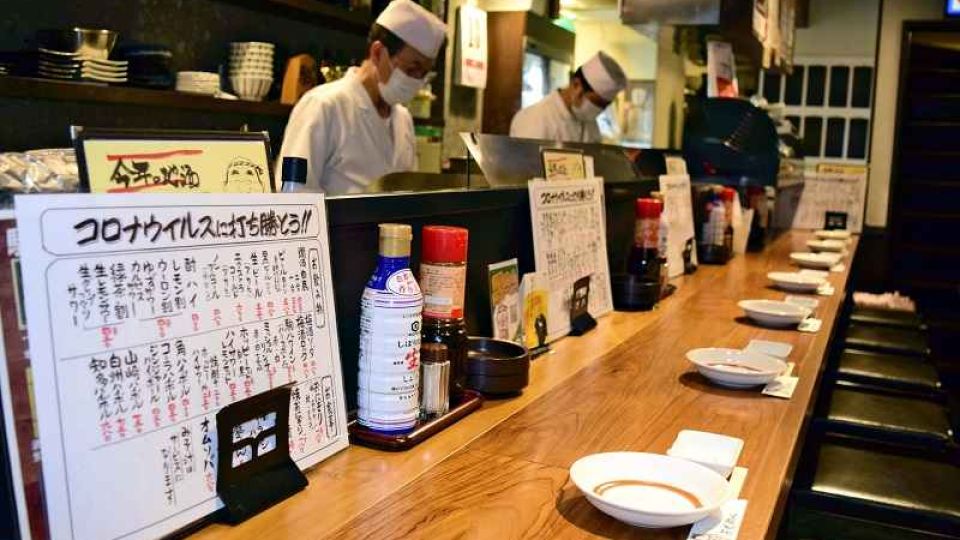September 20, 2022
TOKYO – Japan’s gross domestic product contracted in the first three months of 2021 as state of emergency restrictions to combat the coronavirus pandemic sapped consumption. Steadily rolling out a vaccination program could be crucial for giving the economy its own shot in the arm.
According to Cabinet Office figures released Tuesday, GDP shrank in real terms for the first time in three quarters. Consumer spending was weak during that period due to the impact of the second state of emergency, declared by the government in January.
“We declared a second state of emergency and intentionally put the brakes on the economy,” Yasutoshi Nishimura, the minister in charge of economic revitalization, said at a press conference. “We were aware that would shrink the GDP.”
Consumer spending, which accounts for at least half of Japan’s GDP, dropped 1.4% compared with the same period last year and declined for the first time in three quarters. Spending was lackluster on services such as dining out at bars and restaurants, accommodation, vacations, and rail and plane travel. This drop in private consumption pushed the overall real GDP down by 0.7 percentage point.
The state of emergency’s impact was particularly severe on eating and drinking establishments. A representative of Colowide Co., which manages restaurants including the Amataro chain of izakaya pubs, said, “The declaration of the state of emergency in January wiped out many parties and get-togethers, and the number of farewell and welcome parties held around the end of the fiscal year in March also plummeted.”
Colowide was forced to close about 300 establishments during the second state of emergency.
The picture was rosier for industries that were able to tap demand fueled by people spending more time at home during the pandemic. Major household appliance retailer K’s Holdings Corp. logged a record-high net profit in its consolidated financial results for the term through March 31, boosted by robust sales of large 4K televisions, energy-efficient refrigerators and other big-ticket items. However, the companies that were riding high were few and far between.
Exports faring well
Capital expenditure declined 1.4%, its first drop in two quarters. This corporate investment in building or expanding plants and stores does not increase when the economic outlook is gloomy. Although this expenditure picked up in some corners of the digital-related and manufacturing industries, it appears many businesses remained hesitant to loosen their purse strings.
Exports booked positive growth for the third consecutive quarter. Exports grew, especially in the manufacturing sector, on the back of a recovery in the U.S. and Chinese economies. Honda Motor Co. chalked up a 44.3% increase in net profit in the business year through March 31. The weakening yen and strengthening dollar since the start of 2021 also have given exports a boost, but this growth nudged GDP up by just 0.4 percentage point.
Gloomy prospects
Many market observers expect Japan’s GDP will contract again in the April-June quarter. Unlike the previous states of emergency that pressed mainly restaurants to suspend operations or operate for shorter hours, the third state of emergency now in place widened the scope of establishments subject to such requests to include large commercial complexes, department stores and other businesses. “This will shave about 3% off GDP year-on-year in this quarter,” Daiwa Institute of Research senior economist Keiji Kanda predicted.
Raising the COVID-19 vaccination rate will be crucial for getting GDP back into positive growth. Consumption has rebounded in the United States, where the vaccination rate is high, leading to a pickup in the economy overall. Germany, France and other nations that have steadily rolled out a vaccination program are increasingly likely to record growth in the April-June period.
A global shortage of semiconductors has become a drag on automakers and electrical machinery manufacturers. In its consolidated financial results for the year through March 31, Mitsubishi Motors Corp.’s net income attributable to the owners of the parent company was a loss of ¥312.3 billion. Mitsubishi Motors President Takao Kato said the semiconductor shortage was the company’s biggest problem at the moment. “Any further disruption in the supply would put us in a tough situation,” Kato said.
The quickening pace of Japan’s population decline leaves little prospect for growth in the domestic market. Maintaining economic growth will require companies to boost productivity through such steps as greater digitization and finding new overseas markets. As well as coping with the coronavirus pandemic, Japanese businesses will also need to draw up a clear path toward long-term growth.

